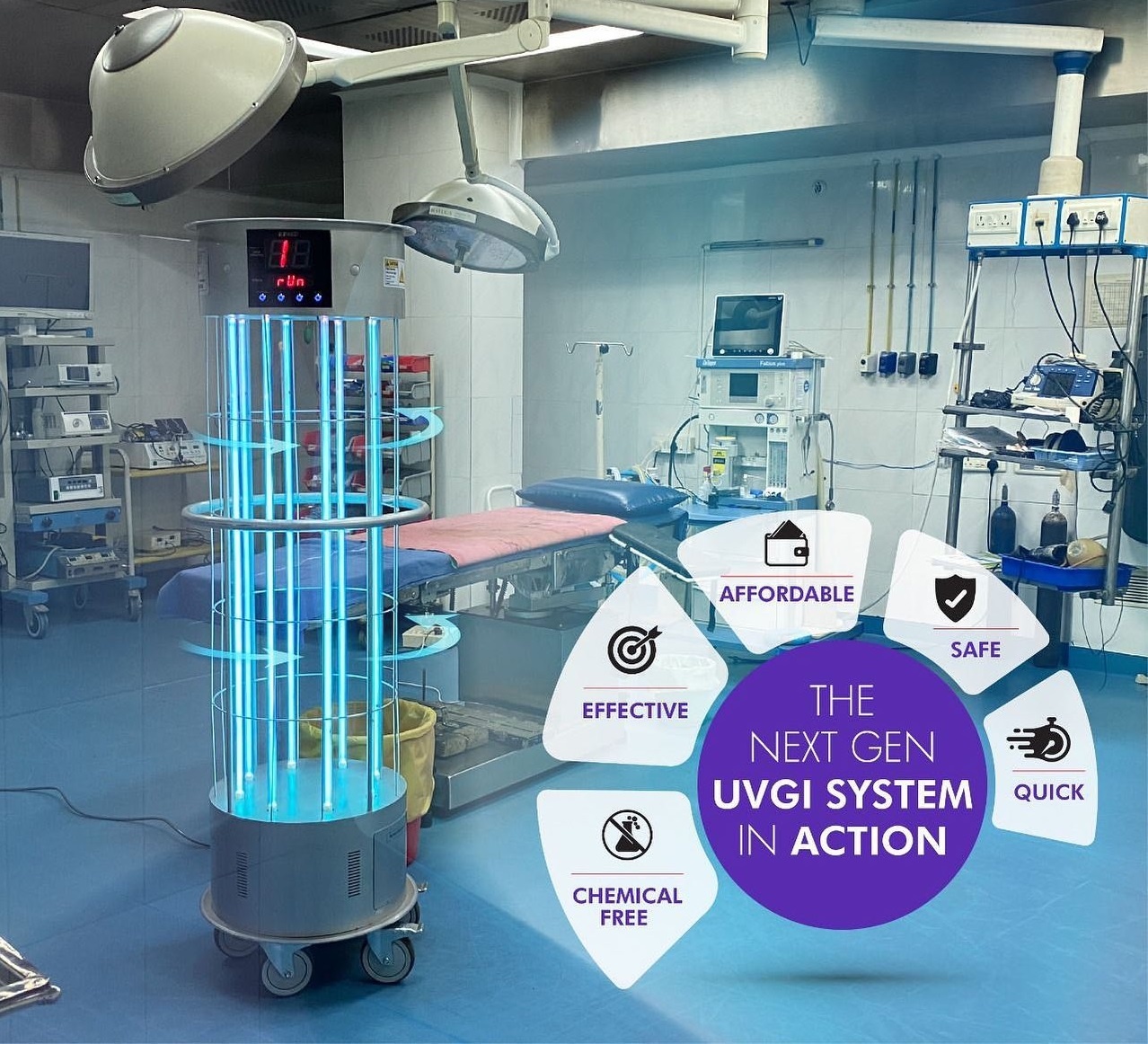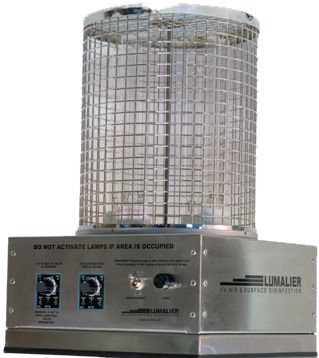Far UVC Light: A Game-Changer in the Fight Against Airborne Pathogens
In the ever-evolving fight versus airborne pathogens, the appearance of far UVC light has actually triggered substantial interest and capacity. What specifically is far UVC light, and just how does it work?
The Science Behind Far UVC Light
The scientific concepts underlying the usage of Much UVC light as a prospective service for combating air-borne microorganisms are both promising and elaborate. Much UVC light describes a certain array of ultraviolet (UV) light wavelengths, commonly in between 207 and 222 nanometers, which have been found to effectively kill or inactivate microbes such as viruses and bacteria. Unlike conventional UVC light, which has a shorter wavelength and is known for its germicidal buildings yet can also damage human skin and eyes, Far UVC light has actually been shown to be safe for human exposure.
The key mechanism behind the efficiency of Far UVC light hinge on its capacity to penetrate and damage the genetic material of microorganisms, including their DNA and RNA. When subjected to Far UVC light, the hereditary material undertakes a process called photodimerization, where adjacent bases in the DNA or RNA particle bind together, stopping duplication and rendering the microorganism incapable to recreate or create infection.

How Much UVC Light Works
Far UVC light operates by making use of specific ultraviolet wavelengths to successfully reduce the effects of bacteria and prevent their replication, making it an appealing remedy for combating airborne pathogens. Unlike standard UVC light, which is unsafe to human skin and eyes, far UVC light has much shorter wavelengths, commonly in the variety of 207 to 222 nanometers (nm), that do not pass through the outer layer of the skin or the tear layer of the eye. This makes it risk-free for continual human direct exposure, while still being dangerous to viruses and microorganisms.
The efficiency of much UVC light depend on its ability to destroy the dna and pass through and RNA of microbes. When exposed to far UVC light, the hereditary material of these microorganisms is harmed, rendering them unable to reproduce and infect cells. Additionally, research studies have shown that far UVC light can successfully inactivate air-borne infections, such as influenza, measles, and coronaviruses, consisting of SARS-CoV-2, the virus in charge of COVID-19.
In addition, far UVC light is additionally capable of decontaminating surfaces and items in an encased area. By installing much UVC light fixtures or making use of portable much UVC light tools, it is feasible to continuously sanitize the air and surfaces, minimizing the threat of airborne transmission of pathogens.
Advantages of Far UVC Light
Using much UVC light offers a variety of significant benefits in combating air-borne microorganisms and ensuring a more secure atmosphere for continual human exposure. One of the key advantages of far UVC light is its ability to effectively neutralize different types of unsafe microorganisms, viruses, and fungi without causing harm to people. Unlike conventional UV light, which can be harmful to human skin and eyes, much UVC light has a much shorter wavelength that enables it to target and destroy virus while posing marginal danger to human wellness.

Moreover, much UVC light is much safer for the atmosphere compared to traditional sanitation methods. Chemical disinfectants frequently have unsafe ingredients that can have adverse effect on the atmosphere. Far UVC light, on the other hand, does not generate any kind of dangerous results or deposits, making it an extra lasting and environment-friendly remedy.
Applications of Far UVC Light
One of the vital uses for much UVC light remains in the field of air filtration and disinfection. Far UVC light has actually verified to be effective in getting rid of airborne pathogens such as infections, bacteria, and fungis. This modern technology functions by emitting a certain wavelength of light that is capable of passing through the outer layers of bacteria and damaging their DNA, providing them incapable and non-active to duplicate. Unlike conventional UV light, much UVC light is secure for human direct exposure, making it suitable for constant use in public spaces such as workplaces, medical facilities, and schools.
An additional application of far UVC light is in the medical care market. It can be made use of that site to sanitize medical facility rooms, running theaters, and clinical equipment, decreasing the risk of healthcare-associated infections. Additionally, much UVC light can be integrated into a/c systems to purify the air flowing in structures, supplying an included layer of defense against airborne microorganisms.
In addition, much UVC light can be used in the food market to avoid foodborne ailments. It can be employed to decontaminate food processing facilities, killing germs and other microbes that might pollute food.
Future Implications of Far UVC Light
The possible future applications of much UVC light are large and hold pledge for various sectors and sectors. One of the crucial locations where much UVC light might have my latest blog post a substantial influence remains in health care settings. Centers and healthcare facilities can utilize far UVC light to disinfect individual rooms, operating cinemas, and waiting areas, decreasing the threat of healthcare-associated infections - far-uvc. This might possibly result in better individual end results and decreased healthcare costs.
Additionally, the use of far UVC light in public rooms such as airports, train stations, and buying malls might assist manage the spread of airborne virus. By continually disinfecting these locations, the danger of transmission can be substantially decreased, offering a safer atmosphere for people.
One more prospective application of far UVC light is in the food industry. Much UVC light might be made use of to disinfect food preparation surfaces, product packaging materials, and storage areas. This could assist protect against the contamination of food and minimize the incident of foodborne ailments.
In addition, much UVC light could be used in a/c systems to sanitize the air circulating in buildings. This could be particularly useful in crowded areas such as workplaces, theaters, and schools, where the threat of air-borne transmission is higher.
Verdict
In conclusion, much UVC light has emerged as a game-changer in the fight check my source versus airborne virus. From public areas to medical care setups, far UVC light deals many advantages in reducing the transmission of conditions.
Far UVC light refers to a certain range of ultraviolet (UV) light wavelengths, typically in between 207 and 222 nanometers, which have been located to efficiently eliminate or inactivate microbes such as infections and germs. far-uvc. Unlike conventional UVC light, which has a much shorter wavelength and is known for its germicidal residential or commercial properties yet can likewise damage human skin and eyes, Far UVC light has been revealed to be risk-free for human direct exposure
Unlike conventional UVC light, which is unsafe to human skin and eyes, far UVC light has shorter wavelengths, commonly in the range of 207 to 222 nanometers (nm), that do not permeate the outer layer of the skin or the tear layer of the eye. Unlike traditional UV light, which can be harmful to human skin and eyes, far UVC light has a much shorter wavelength that permits it to target and destroy microorganisms while posturing minimal risk to human health and wellness.
Unlike standard UV light, much UVC light is risk-free for human direct exposure, making it suitable for continuous usage in public rooms such as colleges, offices, and health centers.